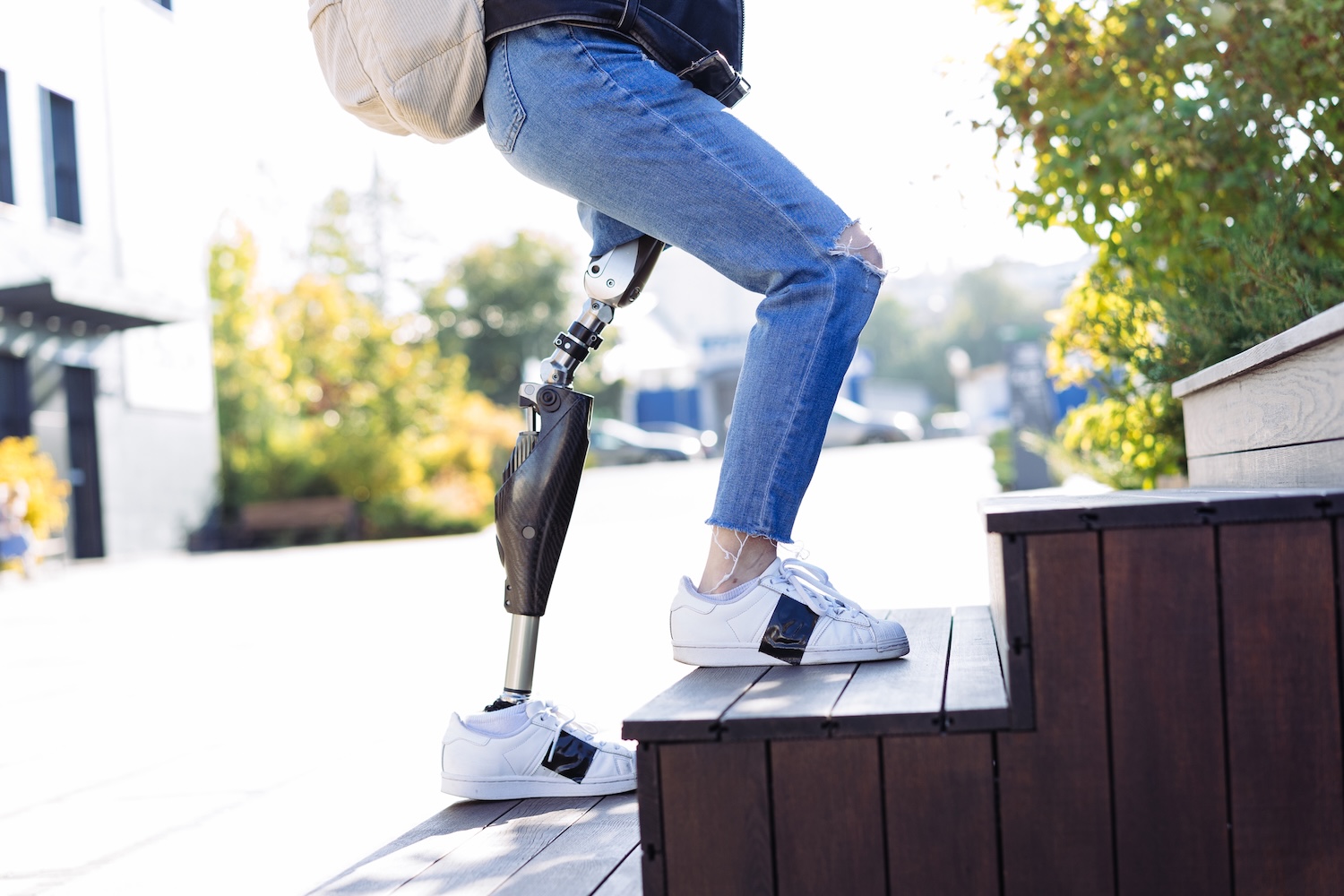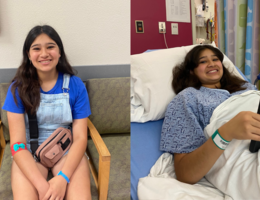

Diabetes is a major cause of limb loss in the United States
In the United States, the Amputee Coalition reports that approximately 2.3 million people are living with limb loss –– the removal or absence of a body part such as a finger, hand, arm, or leg. Additionally, 185,000 people in the U.S. each year experience amputation caused by disease, trauma, or cancer, and more than 500 people lose a limb and each day.
For patients with severe limb injuries, one of the most critical decisions surgeons face is whether the limb can be salvaged or if it must be amputated. Hand and upper extremity surgeon, Andrew Li, MD, says it's a patient-specific decision on when to salvage and when to amputate an upper extremity.
“When possible, we attempt salvage of the mangled upper extremity. However, we always prioritize life over limb,” Li emphasizes. “And so unfortunately, we do end up with patients who lose their upper extremities.”
For those who undergo limb loss, whether upper or lower extremity, the experience can be traumatic, life-changing, and often reshapes how a person experiences life. However, while losing a limb can be challenging, Li says that patients often regain mobility under their new circumstances and live full lives.

What is limb loss?
Limb loss is when a person loses part of their body, which can occur at multiple levels, such as a finger, wrist, elbow, or shoulder for the upper extremity, and toe, foot, ankle, knee, or hip for the lower extremity.
“Limb loss can happen as a result of chronic diseases like diabetes, traumatic injuries such as car accidents, or cancer,” Li explains.
In the U.S., diabetes is the leading cause of lower limb amputations, while upper limb amputations are most often caused by trauma, including motorcycle crashes or fireworks.
Younger men tend to make up most upper extremity trauma cases, while older adults with diabetes are more likely to experience lower extremity amputations.
Treating limb loss
Limb loss cases require a collaborative effort involving surgery, rehabilitative medicine, prosthetists, therapists, social work, and psychiatry among other specialties who work together to restore function, relieve pain, and support emotional recovery.
After the surgical removal or reconstruction of the limb, patients undergo physical or occupational therapy to rebuild strength and mobility, as well as fitting for a prosthetic device when appropriate.
However, treatment is not just for a patient’s physical change.
“There’s grief, trauma, and often a sense of losing part of oneself,” Li says.
Support networks, therapy, and rehabilitation are all part of the treatment process to help patients find their new normal. This multidisciplinary approach helps patients regain independence and adapt to life after amputation.

Effects of limb loss
One of the most complex effects of amputation is phantom limb sensation –– the feeling that a limb is still attached even when it’s not. Nearly all amputees experience phantom limb sensation, Li says.
However, phantom limb pain — when patients feel painful sensations in a limb that’s no longer there –– is a common and challenging aspect of amputation recovery.
“About 60 – 85% of amputees develop phantom limb pain, which can be very debilitating,” Li says. “Some can’t even wear their prosthetic devices because of it.”
To help these patients, Li says surgeons are turning to innovative procedures like targeted muscle reinnervation (TMR), a technique that reroutes nerves from the amputated limb into nearby muscle motor nerve branches.
“By redirecting the nerves, we can reduce phantom limb pain in the majority of patients who undergo TMR,” Li says. “It’s a relatively new surgery that’s transforming recovery for both upper and lower extremity amputees.”
Prosthetic devices for limb loss
For many, prosthetic devices offer an opportunity at independence, though technology still has limitations, especially for upper extremity amputees.
“Prosthetic legs tend to be functionally less complex,” Li says. “In contrast, upper limb prosthetic devices, particularly the myoelectric devices, tend to be more complicated because they must replicate dexterity, something humans have spent centuries trying to engineer.”
Engineers and doctors are working together towards prosthesis embodiment, which is the notion that a prosthetic device is not merely an assistive device, but a part of the patient’s identity.
Through the combination of TMR with software that uses artificial intelligence to interpret muscle signals in the residual limb with greater resolution, engineers and doctors can create devices that give the patient greater intuitive control of the device.

“Within this community, we are working toward devices that allow intuitive control, tactile feedback, and proprioception, which is the awareness of where your limb is in space,” Li says. These three concepts are critical in achieving prosthesis embodiment.”
Still, not every patient chooses a prosthetic device, as some patients adapt well without one.
Hope and purpose after limb loss
While the physical and emotional challenges of limb loss can be severe, Li says there is plenty of hope.
“I have many patients and heard countless stories of those who have gone on to do incredible things after losing their limb,” he says.
A few inspiring examples include a young woman who endured an electrical injury as a teenager, lost both her arms, and learned to do incredible things without using her hands, such as applying make-up, holding a pen, and writing in cursive. Another is a young man who lost a hand in a construction accident, but after rehabilitation, he is now a professional driver, exercises, and raises a family. And a woman who lost a leg due to cancer but now competes internationally on the U.S. National Amputee Soccer Team.
“Losing a limb doesn’t mean losing your life,” Li emphasizes. “It’s about reinventing yourself, finding new ways to move, work, and live. Many patients come out even stronger.”
To learn more about limb loss, prosthetics, and amputation, visit our website here.



